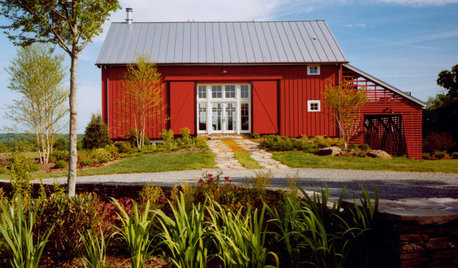Paint Bucket DWC
grizzman
15 years ago
Related Stories

DECORATING GUIDES10 Design Ideas From the Bucket Section of the Hardware Store
These hardworking home essentials will add character galore and keep clutter at bay in modern-rustic style
Full Story
BARN HOMESOn an Architect's Bucket List: To Live in a Barn
Barn renovations celebrate the comfort of simple, big shapes, tied to the land
Full Story
PAINTINGWhat to Know About Milk Paint and Chalk Paint — and How to Use Them
Learn the pros, cons, cost and more for these two easy-to-use paints that are great for giving furniture a vintage look
Full Story
DECORATING GUIDES20 Bathroom Wallpapers That Bring the Wow
These spirited wallcoverings will add a drop of whimsy and a whole bucket of bold to your water closet
Full Story
PRODUCT PICKSGuest Picks: Cool Alternatives to Christmas Tree Skirts
Give your tree a fashionable new outfit for Christmas this year with one of these collars, cuffs, baskets or buckets
Full Story
COLORCreate a Stir With Paint
Sure, you could whisk up an accent wall and call it a day. But for truly sublime rooms, brush up on these creative paint ideas
Full Story
PAINTINGBulletproof Decorating: How to Pick the Right Kind of Paint
Choose a paint with some heft and a little sheen for walls and ceilings with long-lasting good looks. Here are some getting-started tips
Full Story
PAINTINGKnotty to Nice: Painted Wood Paneling Lightens a Room's Look
Children ran from the scary dark walls in this spare room, but white paint and new flooring put fears and style travesties to rest
Full Story
DECORATING GUIDESDIY: Make Your Own Chalkboard Paint
3 simple steps to chalk it up in any color anywhere for cheap
Full Story
FLOORSHow to Paint Your Hardwood Floors
Know how to apply nail polish? Then you can give your wooden floors a brand-new look
Full StorySponsored
Custom Craftsmanship & Construction Solutions in Franklin County
More Discussions






grizzmanOriginal Author
garysgarden
Related Professionals
McKinney Landscape Contractors · Tempe Landscape Contractors · Wakefield Landscape Contractors · Brooklyn Park Landscape Contractors · Cockeysville Landscape Contractors · Downey Landscape Contractors · El Mirage Landscape Contractors · Harvey Landscape Contractors · Kearny Landscape Contractors · Longview Landscape Contractors · Middle River Landscape Contractors · Midland Landscape Contractors · West Chicago Landscape Contractors · Westford Landscape Contractors · North Bellport Outdoor Lighting & Audio Visual SystemsgrizzmanOriginal Author
chuck
grizzmanOriginal Author
chuck
grizzmanOriginal Author
chuck
grizzmanOriginal Author
chuck
grizzmanOriginal Author
garysgarden